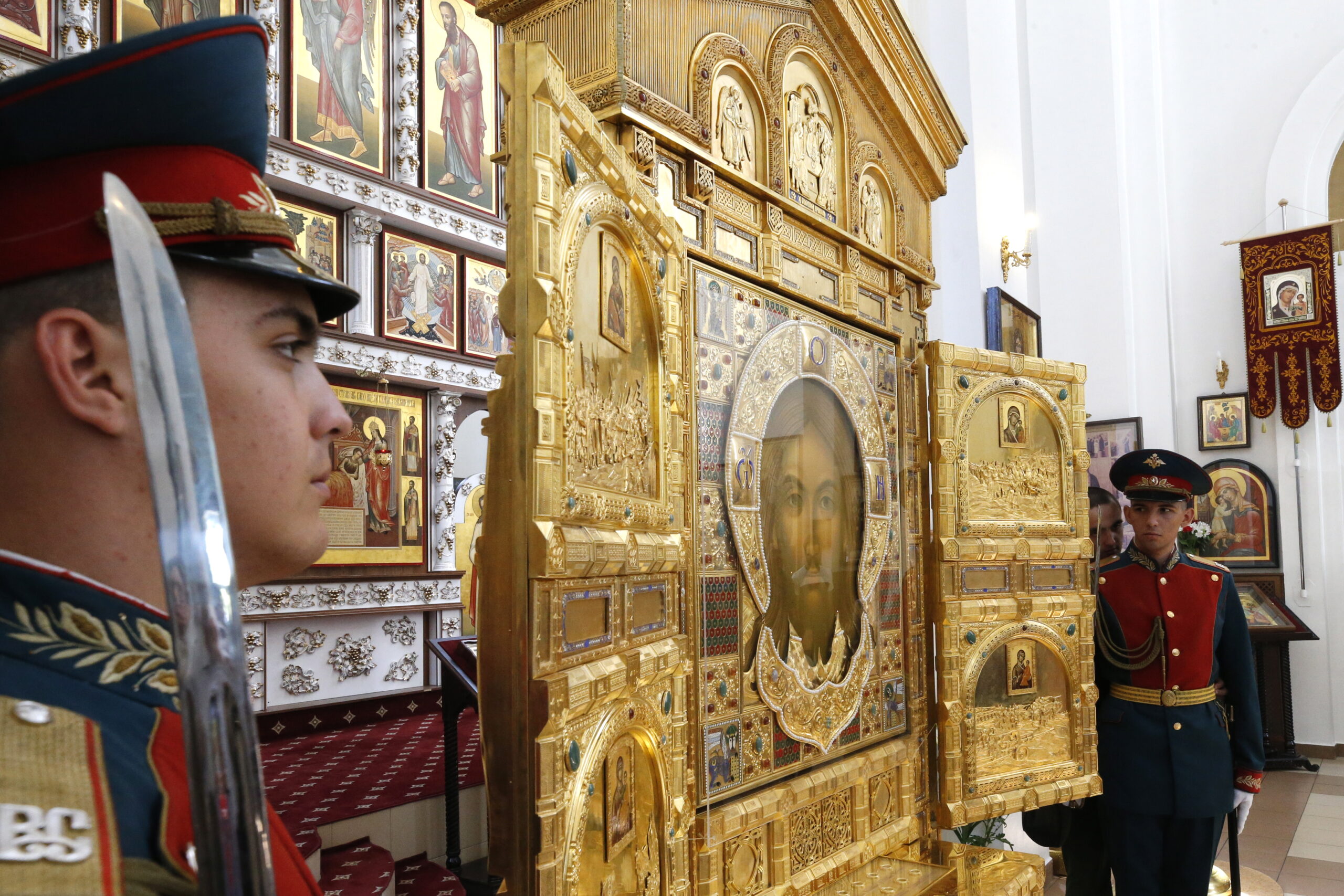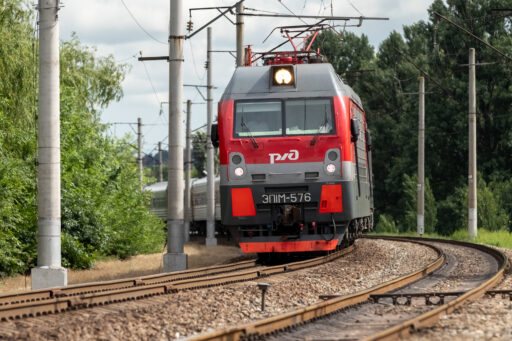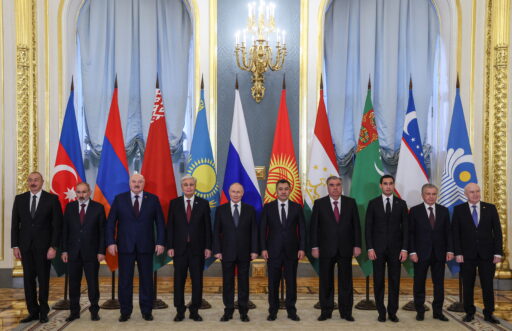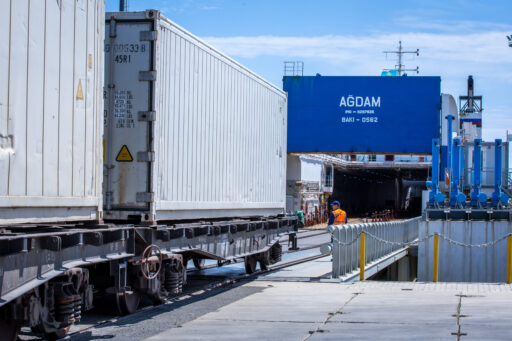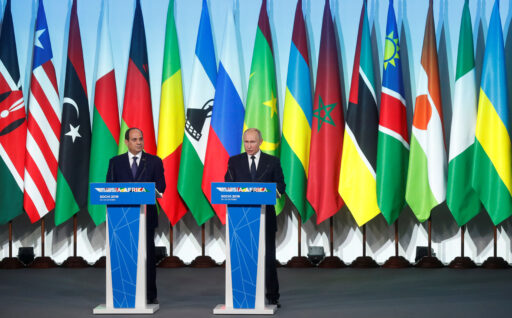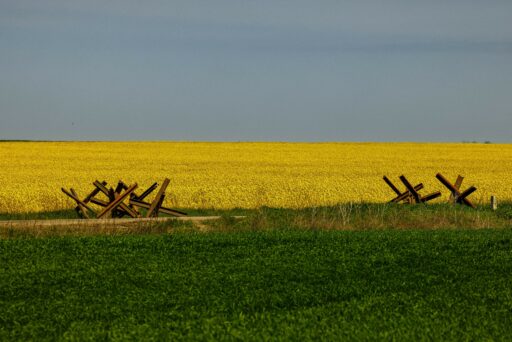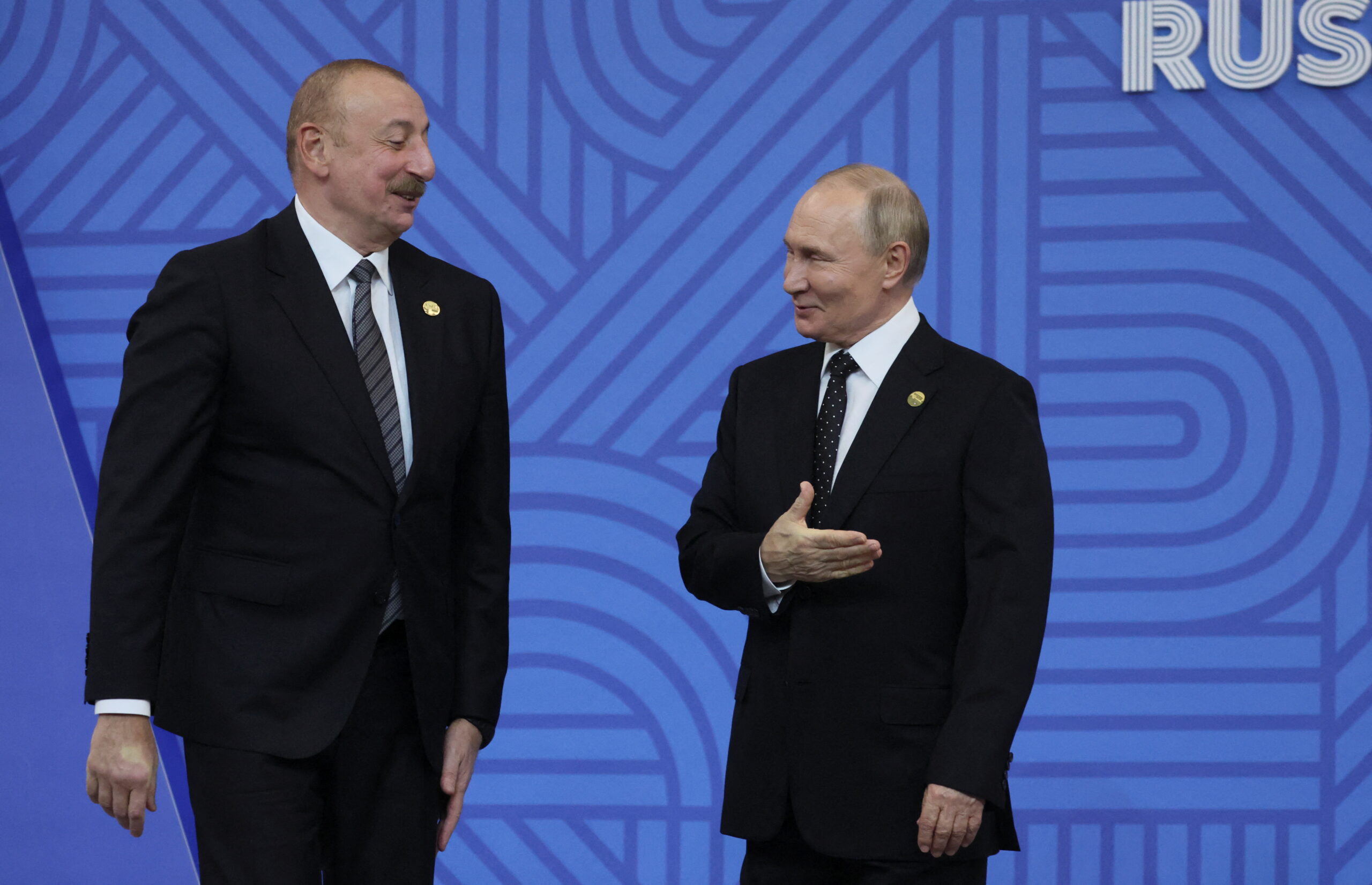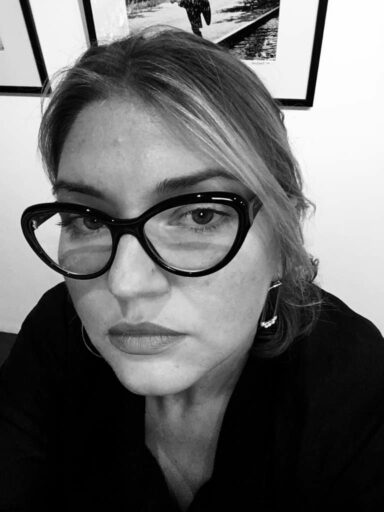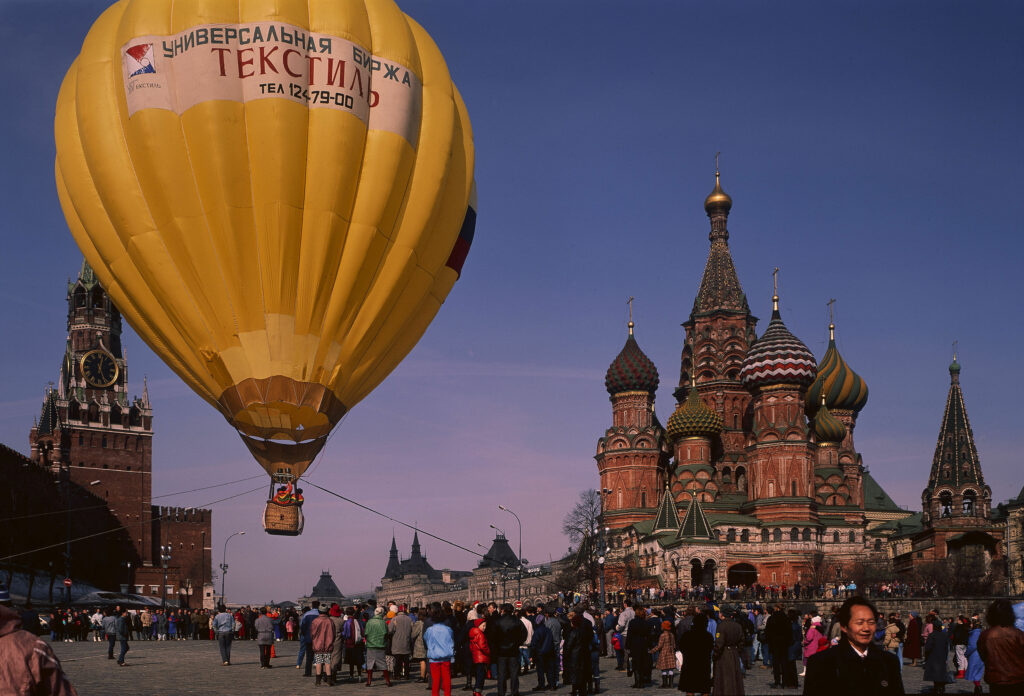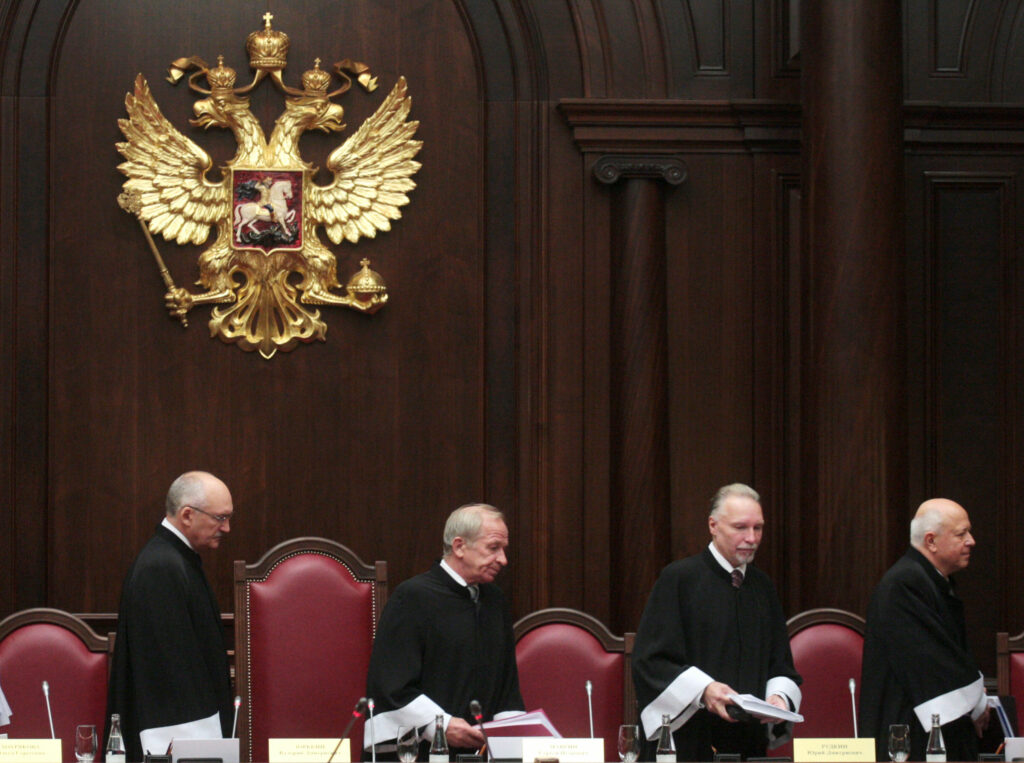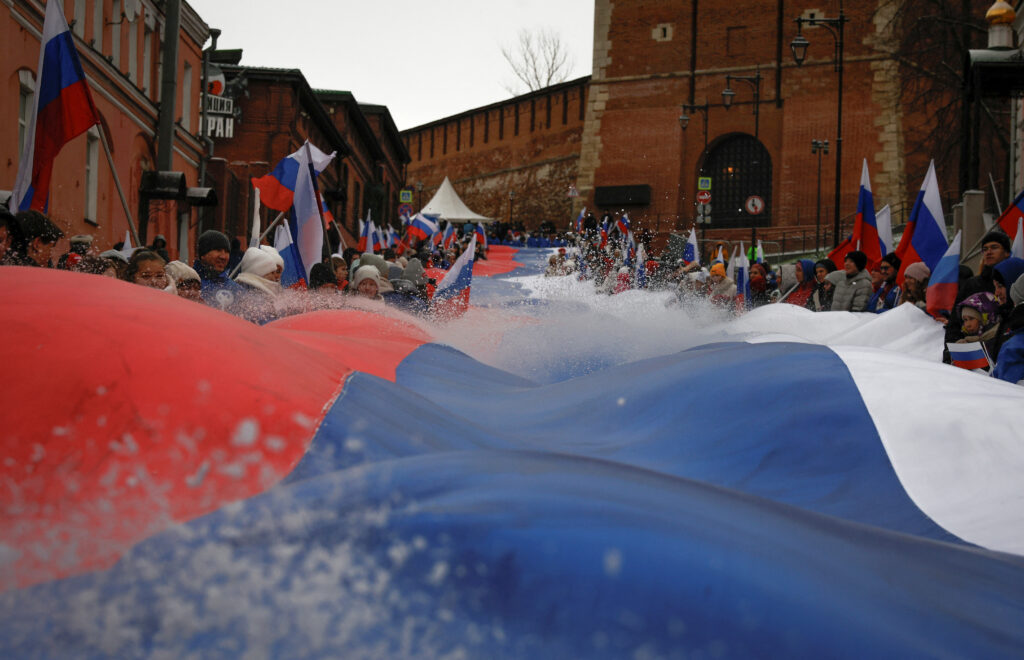Over the course of Vladimir Putin’s 24 years in office, the Kremlin has mastered the art of politically manipulating the past. Most importantly, the memory of the Great Patriotic War (GPW) has been put to political use. Having inherited the official Brezhnevite cult of the war, the regime took it to new heights. A cornerstone of the quasi-ideology that bolsters the regime’s legitimacy, it has been employed to justify, first, Russia’s interference in the armed conflict in the Donbass, and since 24 February 2022, its full-scale invasion of Ukraine.
Just like its Soviet predecessor, Putin’s triumphal cult of the war is focused on the 1945 victory, and has little room for the traumatic questions related to its enormous human cost. Yet, these questions remain. The vernacular «truth of the trenches» was never entirely silenced by the glorious fanfares of the official memory of the war: it manifested itself in literature and film during Khrushchev’s Thaw and Brezhnev’s Zastoi; it came under the spotlight during Gorbachev’s Perestroika; it continues to exist today, alongside Putin’s militaristic cult. Moreover, as Russia’s war against Ukraine grinds on, taking tens of thousands of military and civilian lives on both sides of the front, this truth becomes ever more politically problematic for the Kremlin. Drawing attention to the suffering and losses of the war, it risks undermining the Kremlin’s cult of victory. As it turns out, the Russian Orthodox Church (ROC) is an ally that may help the Kremlin to neutralize this threat.
Since the early 1990s, the ROC has established itself as one of the key actors in Russia’s competitive history market. Just like the Memorial Society, the ROC has been focused on the memory of the Soviet repressions. However, its interpretation of the repressions was strikingly different from the Memorial’s. At first, the ROC’s mnemonic project was focused on clergy and laypeople who suffered for their faith in the early Soviet years: in 2000, nearly two thousand of them were glorified as new martyrs and confessors of Russia. According to the ROC, the believers who fell prey to the theomachist Soviet regime not only attested to their faith, but secured the future salvation of the Church from utter ruin and paved the way for Russia’s religious revival. Moreover, they laid the foundations for the reestablishment of Russia as a great state, if only in the new form of the Soviet Union. With time, the ROC began using the concept of martyrdom to interpret the Soviet repressions more generally. Thus, those who perished in the Gulag were turned into martyrs who sacrificed their lives, albeit not for God but for the Fatherland; their suffering and death were invested with patriotic sense. Since the 2009 enthroning of Patriarch Kirill, the ROC has become active in advancing its own interpretation of the GPW, which, just like its interpretation of the repressions, is built upon the concept of martyrdom.
Secularised martyrdom
Importantly, there’s nothing unique about it. While martyrdom is an essentially religious concept, it was secularised in the 20th century. In various national contexts, victims of past atrocities and military conflicts are framed as martyrs. Thus, very much like religions, nations have their martyrs. Moreover, martyrdom is a potent instrument that allows politically problematic memories to be turned into politically useful ones. It converts defeat into victory and trauma into triumph. It renders the tales of national disasters and catastrophes into ones of deliverance and empowerment. Portraying violent death as noble and even romantic, something to be respected if not to admire, martyrdom invests it with sense. Hence, it is little surprise that political actors often use the language of martyrdom to frame national memories. What is peculiar in Russia’s case, however, is that it is the ROC itself that politicizes this language.
The ROC’s role in interpreting the war attracted much public attention in 2020, when the consecration of the Main Cathedral of the Armed Forces of the Russian Federation became one of the important events of the official celebration of the 75th anniversary of the 1945 victory. In 2021, 2022, and 2023, the cathedral was a site of major V-Day commemorative events. Until then, however, the church of St. George the Victorious on Poklonnaya Hill had been playing this role. Consecrated on May 6, 1995 by Patriarch Alexei II, the church is a central element of the cognominal memorial complex. On Poklonnaya Hill, the 1812 Patriotic War, WWI, the GPW, and the war in Afghanistan are all tied together in a tale of the military glory of a single country, whether its name is the Russian Empire, the Soviet Union, or the Russian Federation. On May 6, May 9, and June 22 annually, commemorative ceremonies take place in the church.
Symbolism and rituals of victory
May 6 is the Feast Day of St. George. At times, Easter falls on May 6. It happened, for instance, in 1945, a fact whose symbolic (or mystic) significance Patriarch Kirill always stresses in his sermons. To mark the holiday, Patriarch celebrates the Divine Liturgy in the Church of St. George. The liturgy is followed by a parade: Patriarch Kirill, the mayor of Moscow Sergei Sobianin, and veterans of the GPW watch young people from the Fraternity of Orthodox Pathfinders, the Organization of Young Russian Scouts, historical reconstruction clubs, and other youth organizations from Moscow and other cities, as well as cadets from Moscow’s military schools, march and then lay garlands of flowers at the Eternal Flame. After the parade, the Russian national anthem is sung and a minute’s silence is observed.
If the 1945 Easter fell on May 6, the 1941 Feast of All Saints of Russia fell on June 22, another coincidence that Patriarch Kirill never fails to mention. On June 22 every year, a prayer for the dead is offered in all the churches of the Moscow Patriarchate. Hierarchs of the ROC, including Patriarch himself, lay flowers at the Tomb of the Unknown Soldier at the Kremlin wall. The ceremony also includes offering a prayer for «chiefs and warriors who laid down their lives for faith and the Fatherland,» the singing of Memory Eternal, observing a minute’s silence, a military orchestra playing the Russian anthem, and the march of the Honor Guard of the Preobrazhensky Regiment.
According to the ruling of the 1994 Archbishops’ Council, during the May 9 celebration of Divine Liturgy, a special prayer to commemorate «warriors, who laid down their lives for faith, the Fatherland and the people, and those who perished in the years of the Great Patriotic War» is offered in all the churches of the Moscow Patriarchate. In 2010, Patriarch Kirill introduced a new order of service and offered a prayer of thanksgiving to God for the gift of victory. When creating it, Patriarch drew on the prayer that St. Philaret (Drozdov), Metropolitan of Moscow, wrote to mark the Russian victory in the Patriotic War of 1812, as if to remind that Russia is not only the land of Orthodox Christianity but also a country of never-diminishing military glory. In 2015, another novelty emerged. Following Patriarch’s ruling, on May 9 starting at noon, funeral bells are to toll for fifteen minutes in honor of the war dead in the churches of the Moscow Patriarchate, as if a funeral service was in progress, the men had died just a few days ago, and the war ended yesterday (or never ended at all).
The ROC’s annual commemorative ceremonies, which intertwine the Divine Liturgy with a parade and prayer with a march, are a peculiar blend of Orthodox Christianity and militarism. While they betray the ROC’s specific interpretation of the war, the sermons that Patriarch Kirill delivers on these occasions convey it in no uncertain terms. Its key tropes are easily identified: in 1917, Russians betrayed their faith, starting the period of godlessness; during the war, they (re)turned to their faith and the resurgence of the Russian Church began; the war was a penance, visited upon the Russian people to punish them for the sin of apostasy; victory was God’s miracle. Here, the 1917 Revolution and the 1945 victory are tied into one nodus, where the revolution stands for sin, the war represents the atonement for this sin, and the victory manifests the glory of salvation. The tale of sin, atonement and salvation requires martyrs, which is precisely who the war dead are in this interpretation.
Building a case for suffering
The differences between religious martyrdom and death at war are many. It’s not only that soldiers are not witnesses to Christianity and many of them may not be (practicing) Christians at all. The mass, involuntary and brutal death in battle is hardly similar to the individual, voluntary and ecstatic sacrifice of a martyr. Yet, Patriarch Kirill obscures these differences in his sermons. He portrays those who died in the GPW, quite literally, as martyrs, albeit martyrs of patriotism rather than Orthodox Christianity: after all, they lost their lives for the Fatherland, not God.
Suffering is a part of any war story, and any martyr’s story. In his sermons, Patriarch Kirill does not gloss over the suffering of the GPW. He emphasizes it, describing it almost voluptuously, because the suffering pays. To martyrs, suffering brings salvation; to soldiers, it brings victory. Hence, the more suffering, the grander the triumph. Similarly, death does not present a problem here, since dying in the war brings about the glory of victory, just like dying for God brings about the glory of salvation. As enormous suffering of the war morphs into passion, and death on unprecedented scale is invested with sense, the war itself no longer appears to be something that should never happen again. In the meantime, the Fatherland itself is celebrated as worth suffering and dying for. Whether the Fatherland’s name is the Soviet Union or the Russian Federation seems of little importance, since the soldiers of the Soviet army who died in the GPW are celebrated as martyrs of today’s Russia.
The ROC’s martyrological interpretation of the war resolves the contradiction between trauma and triumph by transforming the former into the latter. Fully compatible with the Kremlin’s official cult of the victory, it tackles the problematic questions related to its human cost. It connects war heroism with spiritual salvation, and portrays war as heroic, glorious and noble. It praises giving up one’s life for one’s country on the battlefield, and represents war as acceptable, if not desirable. Thus, it helps the Kremlin in using the memory of the GPW to justify its war of aggression against Ukraine.
Yet, it would be a mistake to view the ROC’s mnemonic activism as merely situational. Indeed, the ROC cooperates with the Kremlin closely, including in the field of the military, the result being the multifaceted process of the militarization of Russian Orthodoxy and sacralization of militarism. Nonetheless, its martyrological interpretation of the GPW is rooted in the ROC’s traditional outlook on Russia’s national past, which combines spirituality with militarism. It is in this tradition, and not in the politics of the day, that lies the power of the ROC’s martyrological mnemonic project.
